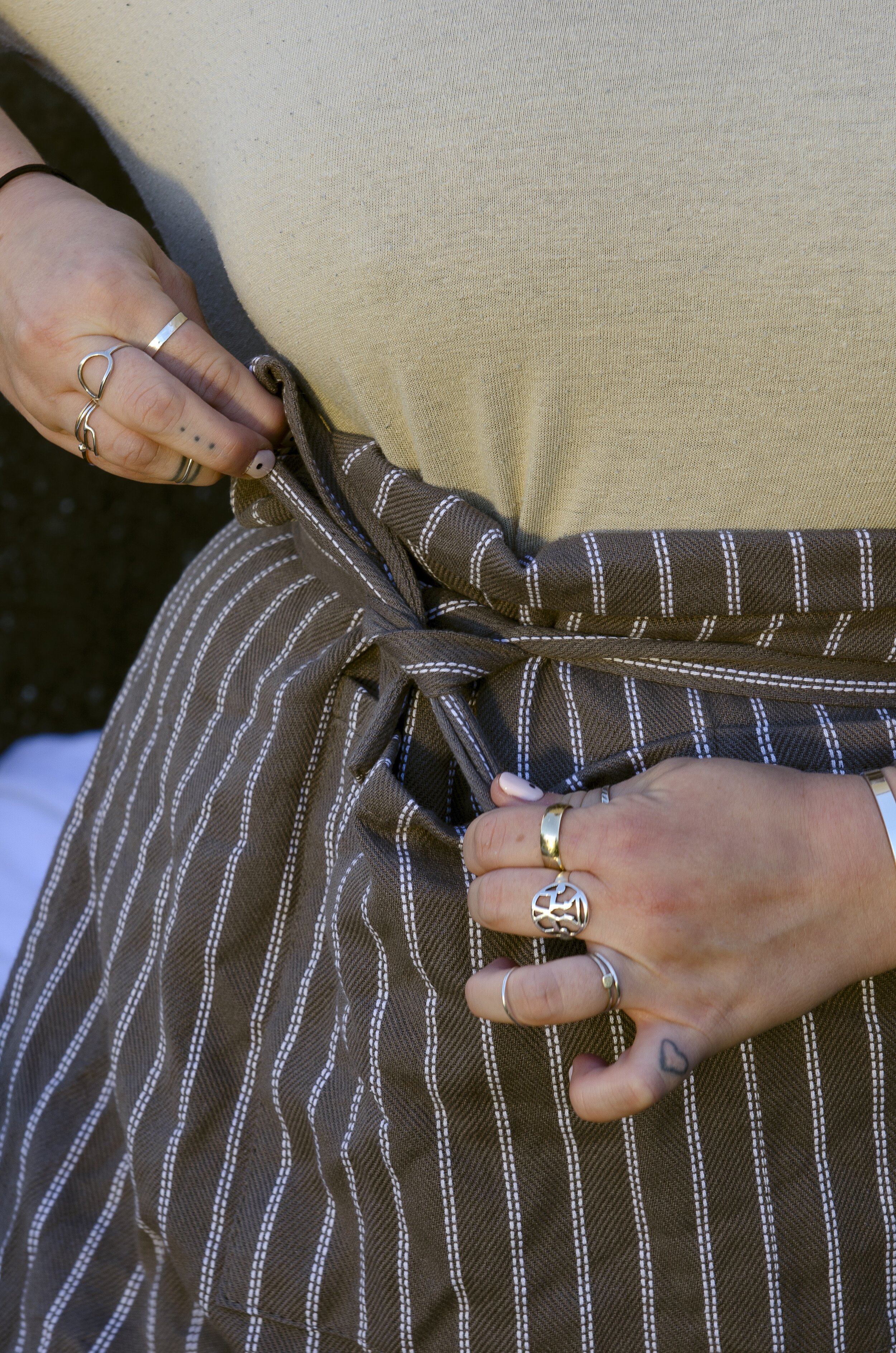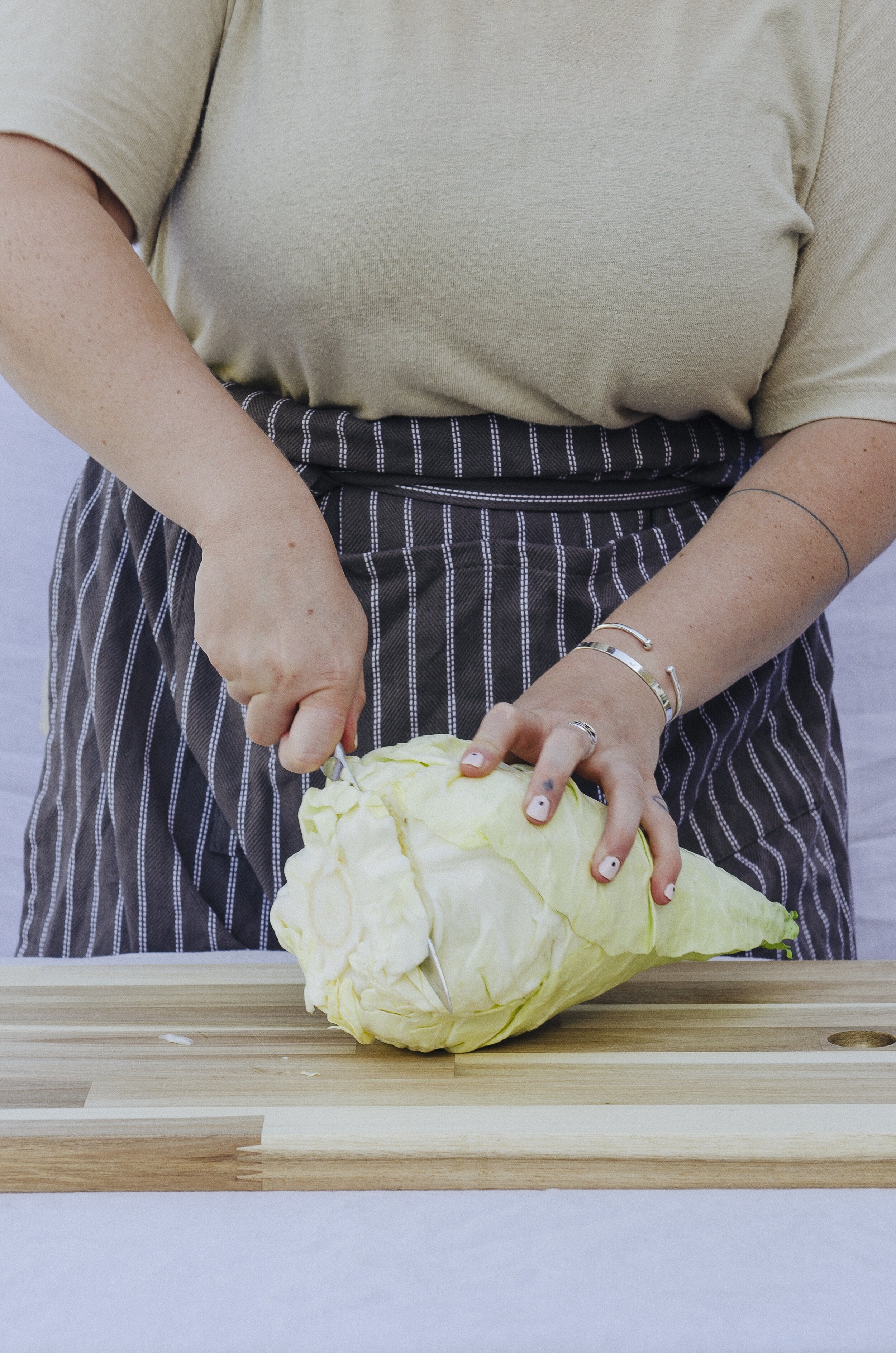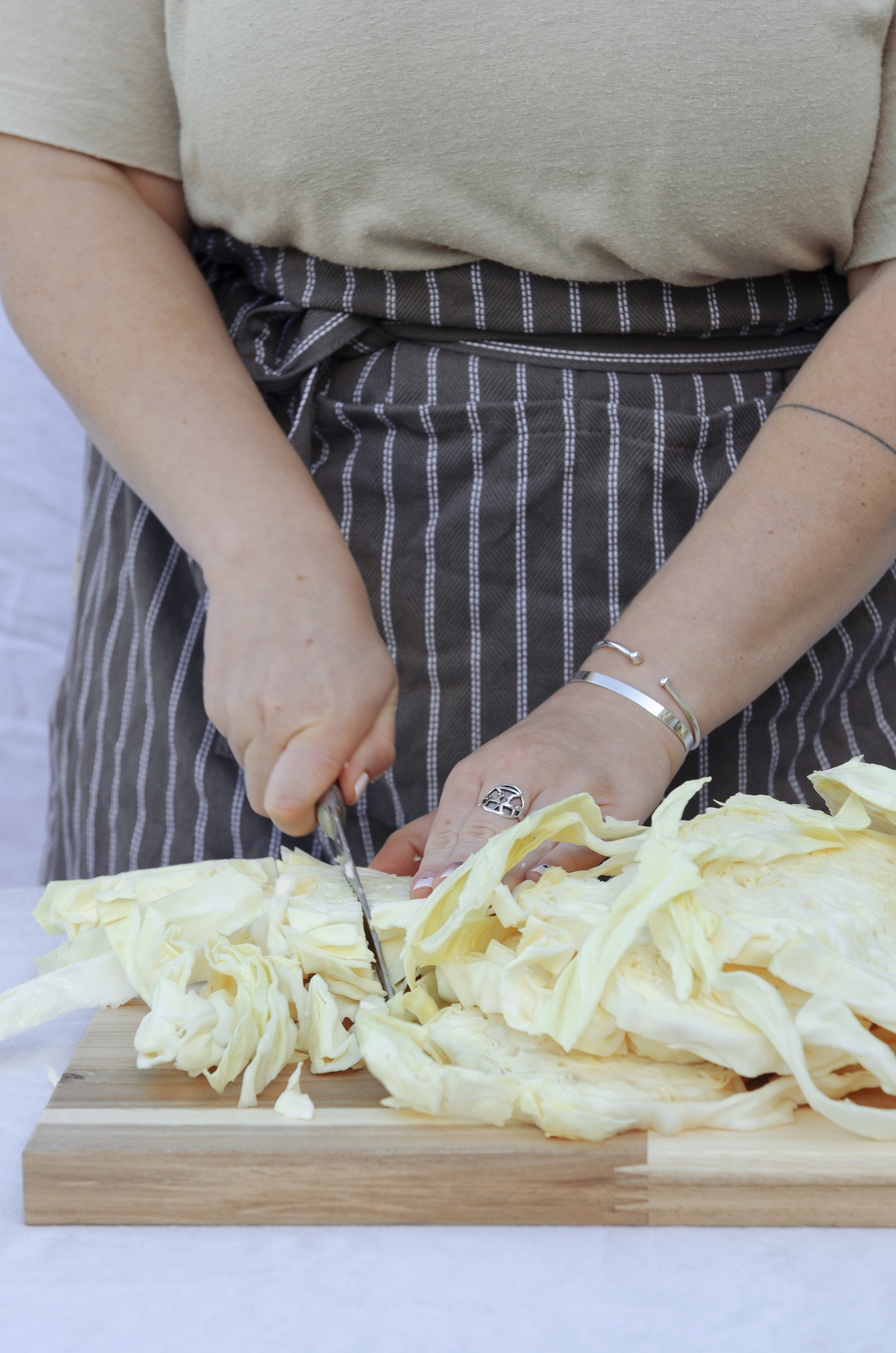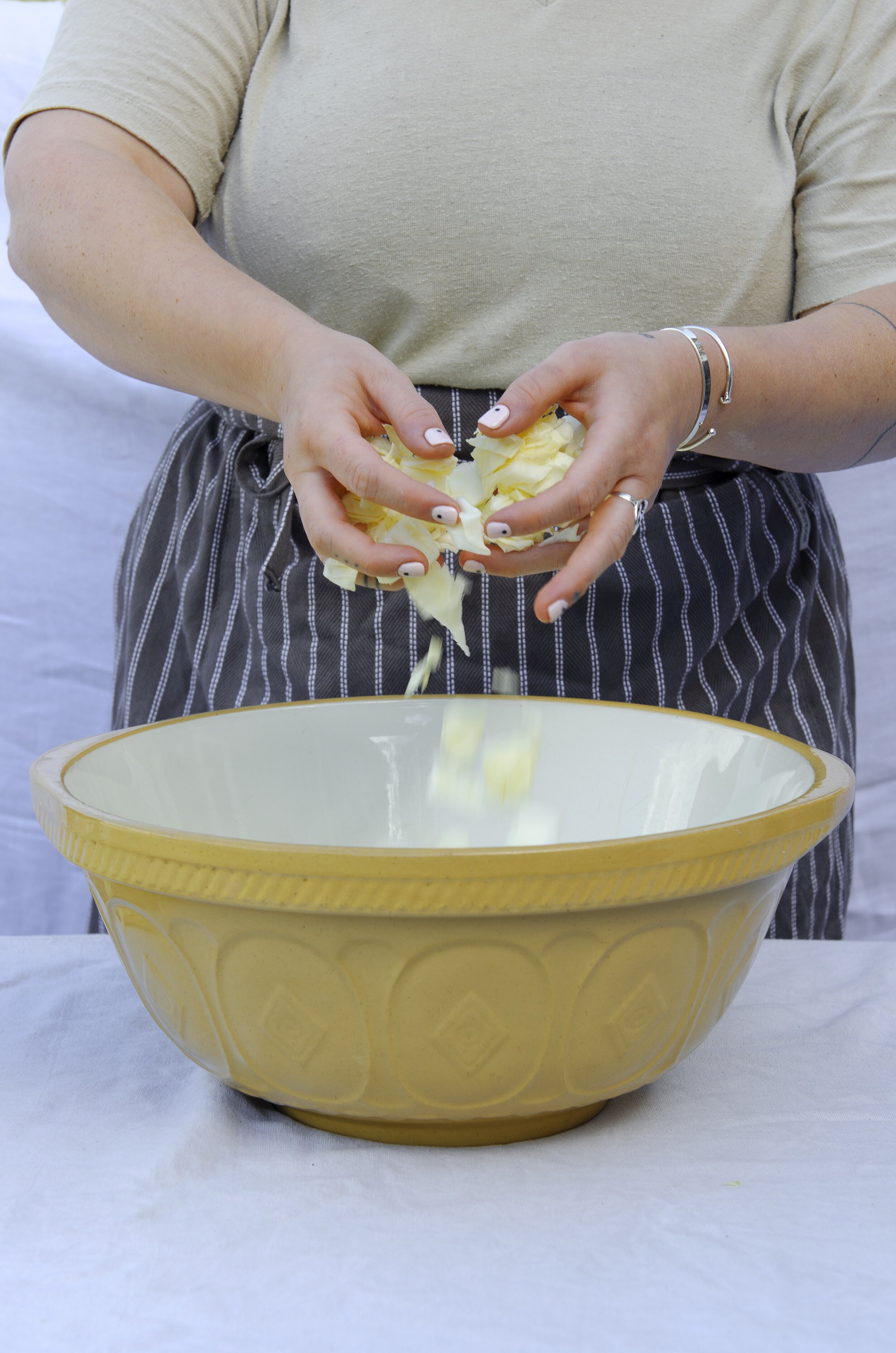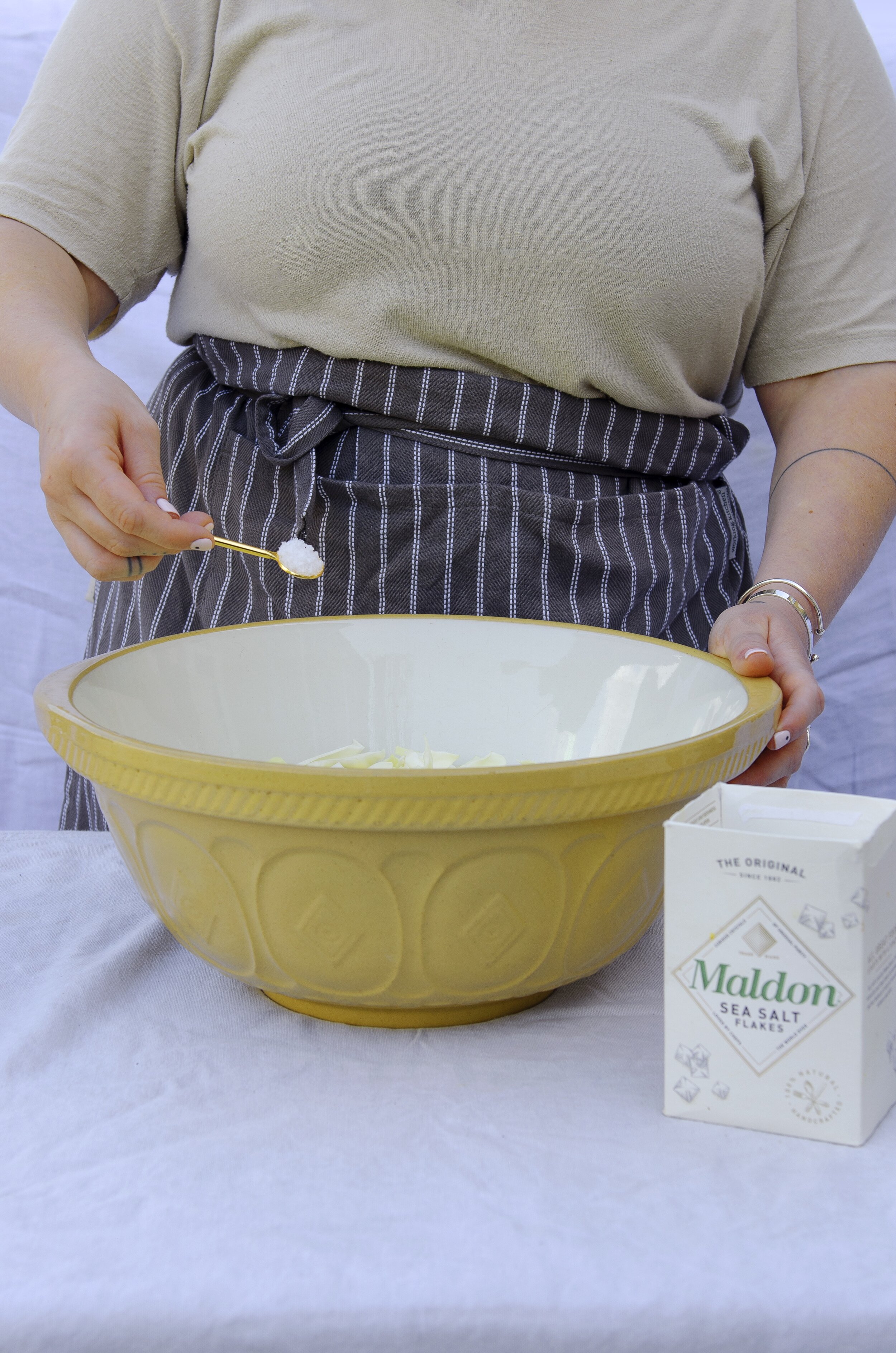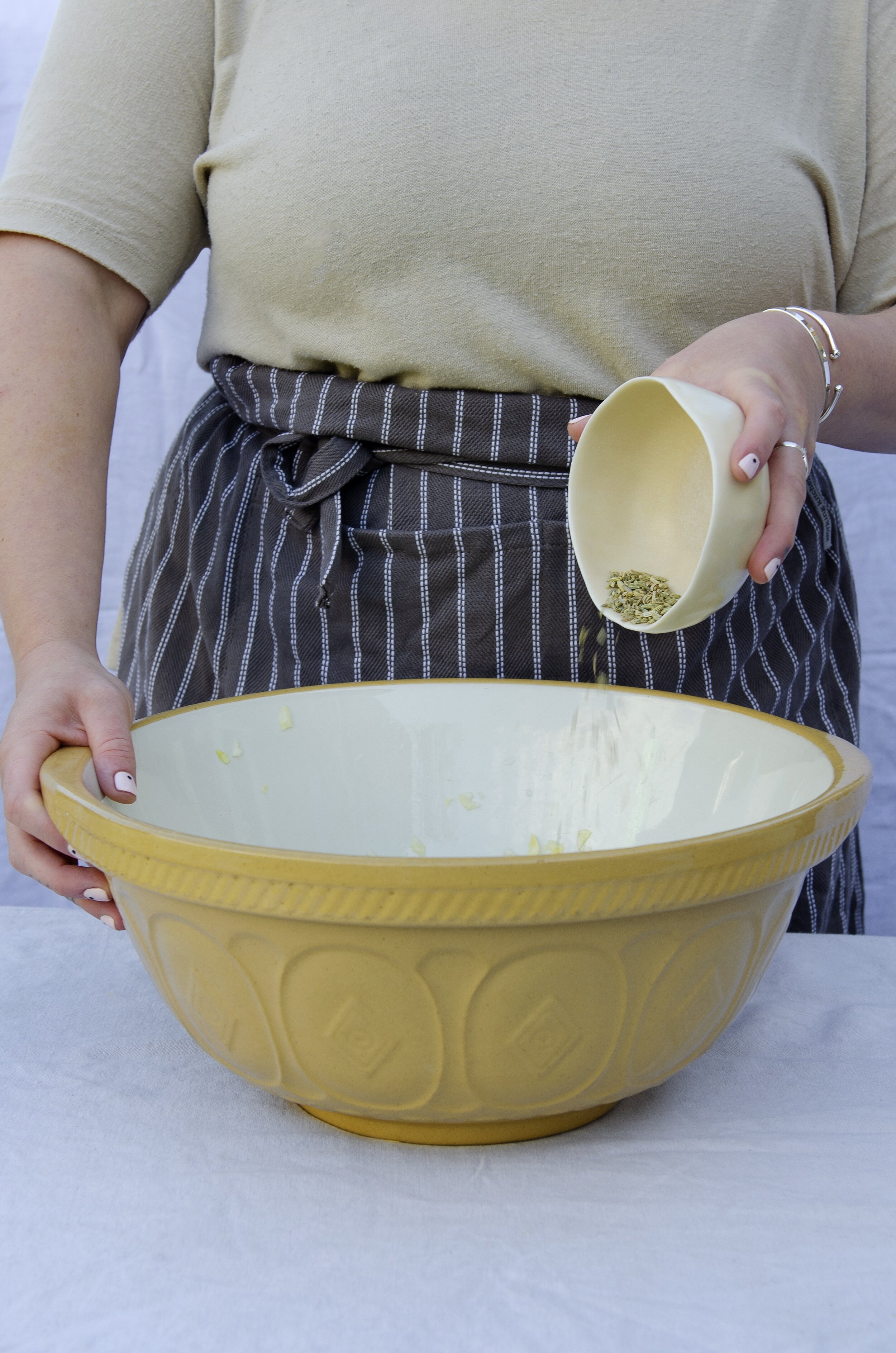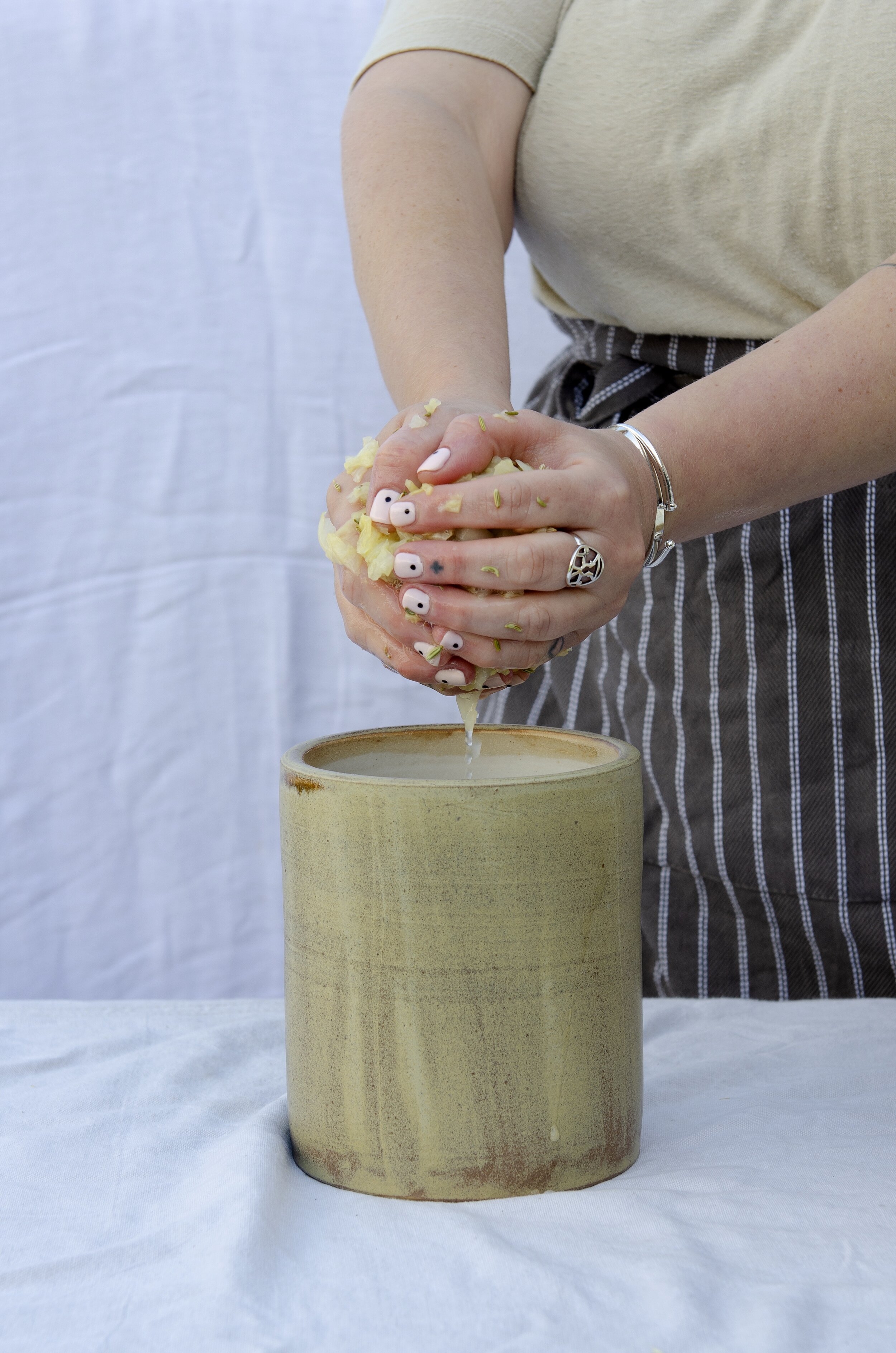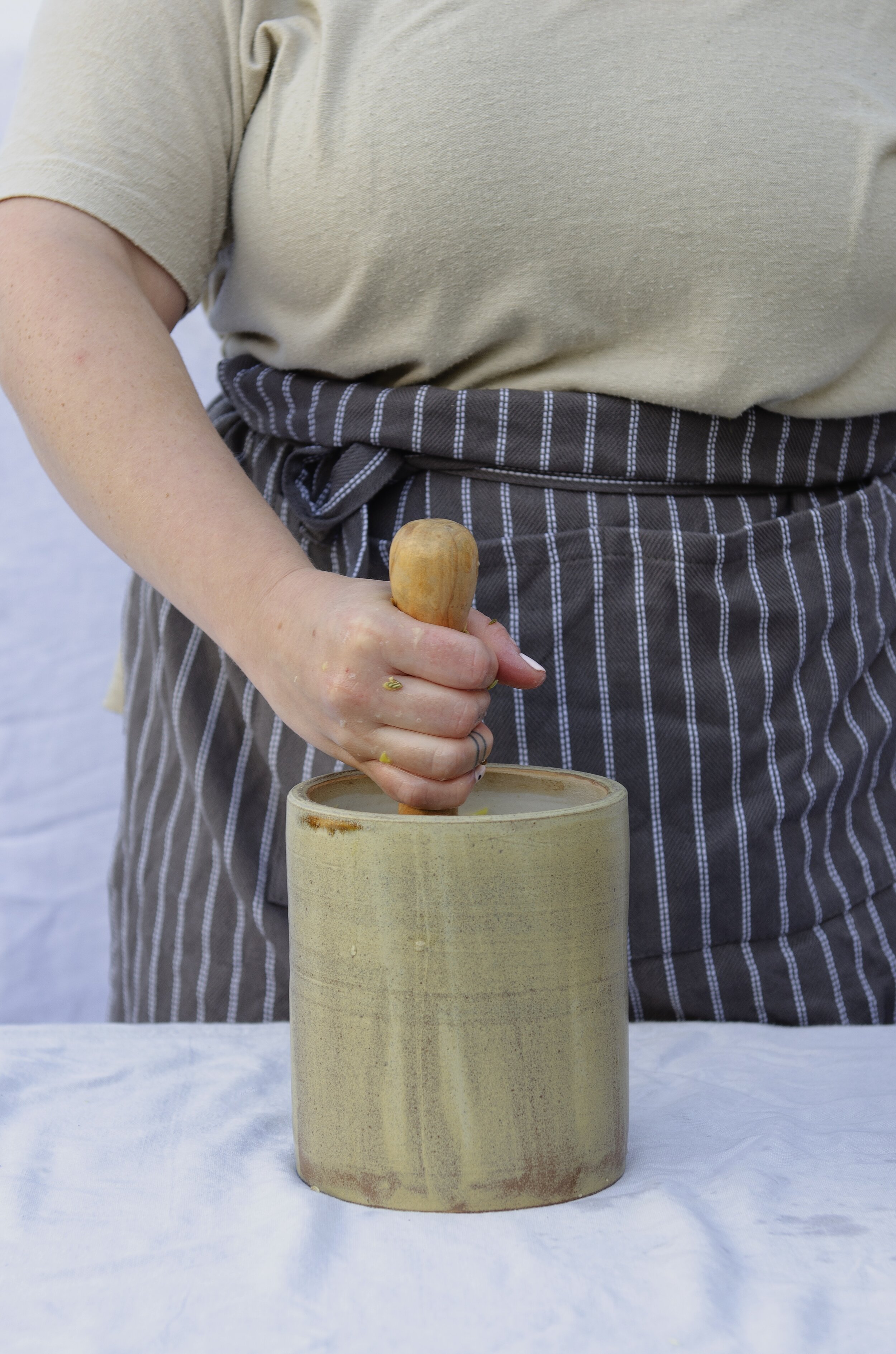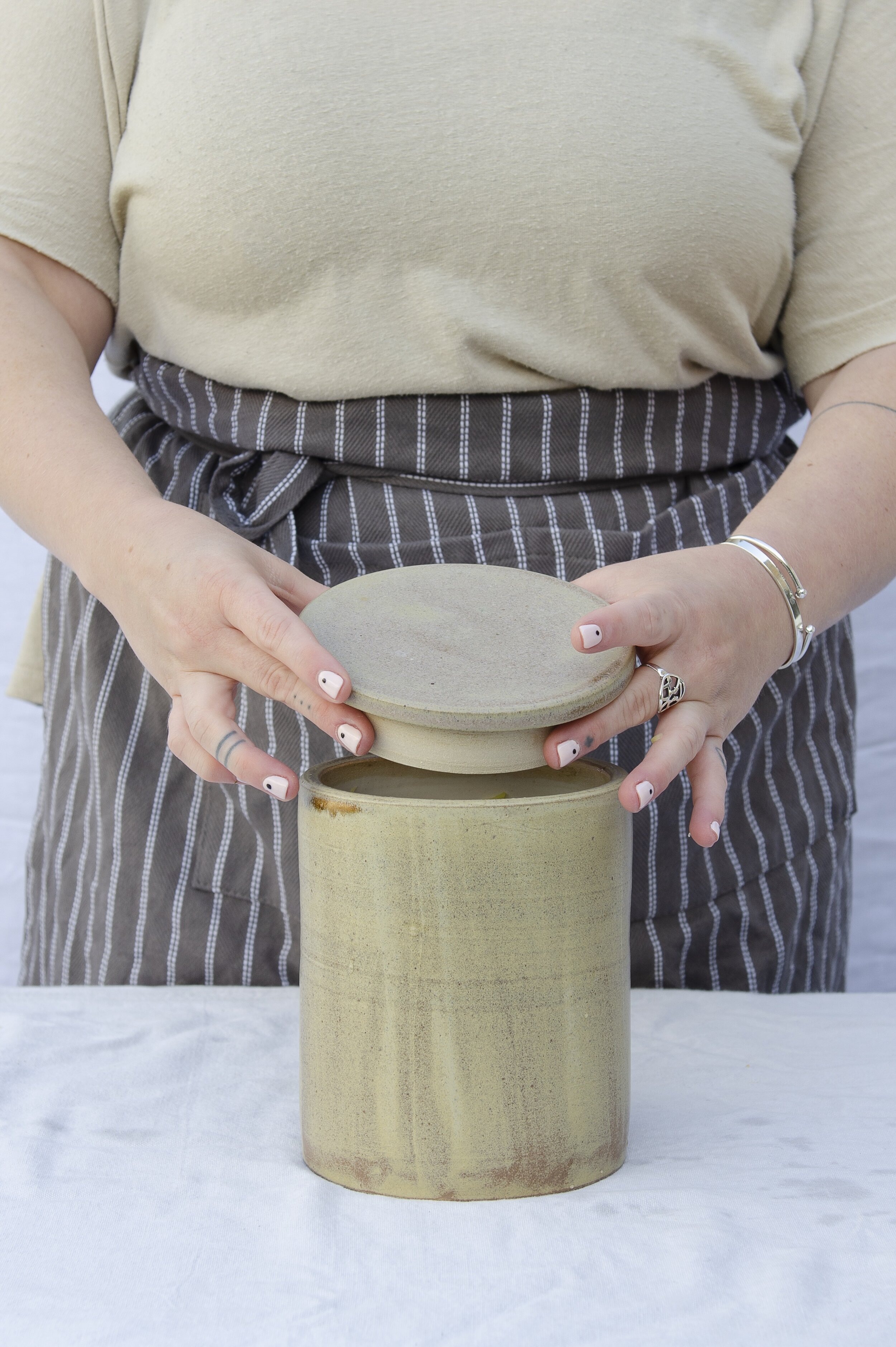White cabbage & fennel sauerkraut
To make sauerkraut, cabbage is fermented by lactic acid bacteria to give it a delicious sour taste. Sauerkraut contains fibre, vitamins & minerals and live bacteria similar to that found in yoghurt and kefir. The fermentation process makes the cabbage more digestible when we eat it so that our intestines can extract more nutrients from it than it might have done when it was raw.
Sauerkraut is easy to make at home and fun to experiment with. It might take a few batches to discover how it works best for you and which textures and flavours you prefer.
It is best to use organic vegetables so that no pesticides can interfere in the fermentation process. The same goes for salt, I use sea salt free from anti-caking agents & iodine.
You can use pointed cabbage, savoy cabbage or red cabbage. It all comes down to personal taste and preference.
It’s a delicious side with any meal but I just take it by the forkful once a day to keep my gut in tip top shape!
You will need:
A fermentation crock or large glass Kilner jar
A large bowl
1kg of cabbage
2 tsp fennel Seeds
3 tsp sea salt
Method:
Chop & shred your cabbage up into your preferred size. I like to chop quite small and fine but others may prefer slightly bigger chunks.
Transfer the cabbage into a large bowl and add the salt to it.
Begin rubbing the salt into the cabbage, massaging it thoroughly. Water will begin to draw out of the cabbage as you do this. This liquid is what will preserve your cabbage as it ferments into sauerkraut.
Squeeze and massage the cabbage for about 10 minutes until you have a pool of water in your bowl.
Allow the cabbage to sit in the salt for about 10 more minutes to allow it to soften and wilt some more and allow more liquid to extract and then mix your fennel seeds through the cabbage.
Transfer your cabbage into a fermentation crock or sterilised Kilner jar and push it right down compacting it into the container. Leave a bit of space at the top to allow for expansion.
Weigh down your cabbage to ensure its completely submerged in its liquid. This is important as any cabbage that is left out of the liquid can attract and grow mould. I use a the ceramic weight that came with my fermentation crock but you can also use a ramekin or a big cabbage leaf to push and hold your cabbage down beneath the liquid.
Leave your kraut to ferment at room temperature for any time between 4 days or several weeks or months. If you prefer a lighter ferment try it after 4 days. If you like a stronger ferment then leave it for longer and taste it every few days until it’s to your liking.
If you’re using a Kilner jar you need to open your jar and ‘burp’ your sauerkraut every other day to allow any trapped gasses out of the jar and prevent it exploding. You can also leave the jar open and cover it with a muslin or cheese cloth. Every day or so you should also skim off any scum that rises to the top of the jar.
Your sauerkraut should keep in the fridge for about 6 months.
